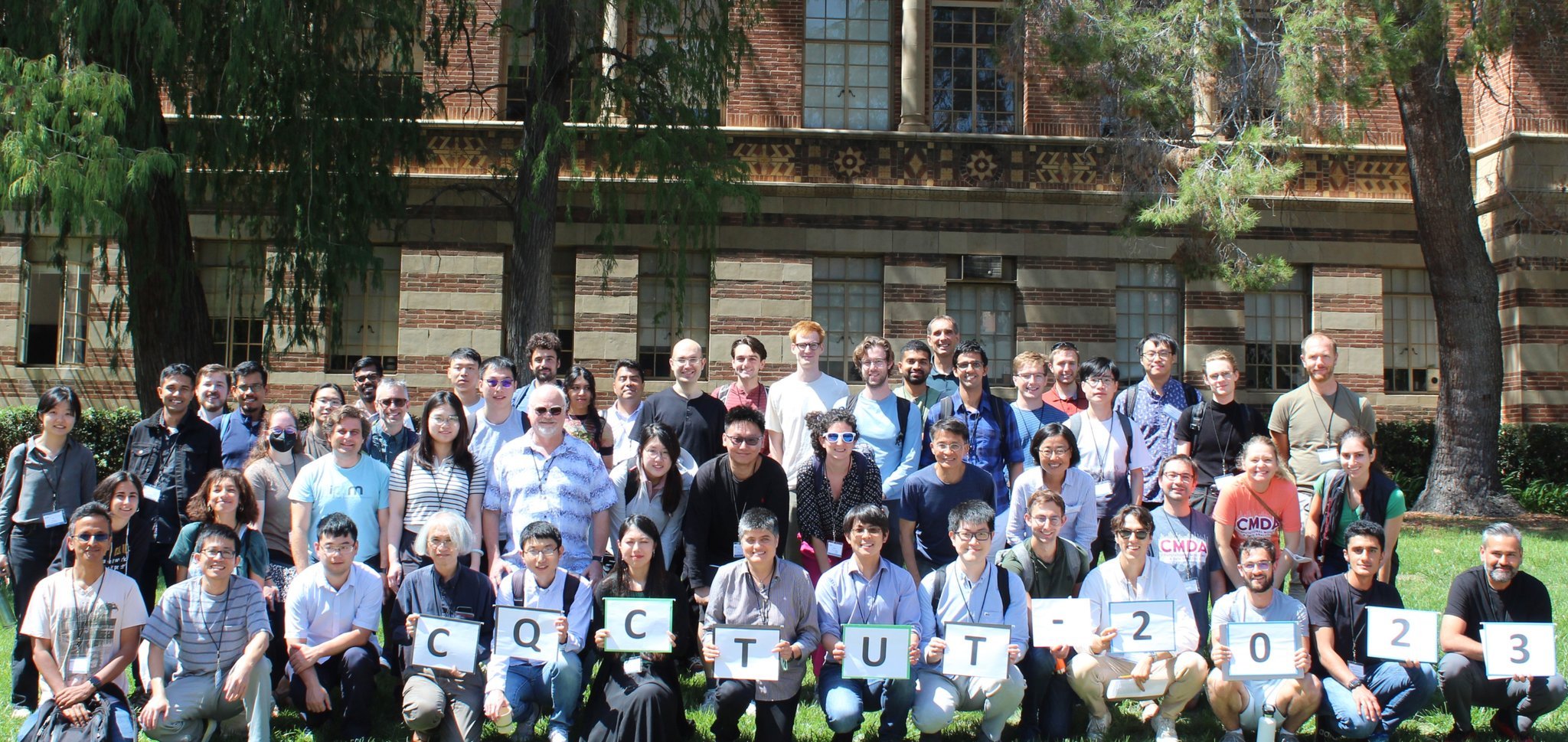CIQC’s Impact in Action: Building Quantum Careers in Mathematics
Behind the scenes of NSF’s CIQC is a powerful story of workforce development: mathematicians without any prior exposure to quantum science are emerging as leaders in a rapidly expanding field, thanks to a training model that’s both rigorous and deeply interdisciplinary.
“I had never worked on quantum computation before 2019,” says Lin Lin, Professor of Mathematics at UC Berkeley and a core member of CIQC. “Now, former students and postdocs from our group are exiting UC Berkeley as assistant professors at top institutions. That kind of trajectory is rare—and exciting.”
Lin Lin, Professor of Mathematics
Lin began exploring quantum computation driven by seed funding at Lawrence Berkeley National Lab and inspiration from events at the Simons Institute for the Theory of Computing. He wasn’t alone. Two of his graduate students, Yu Tong and Dong An, took a leap into the unknown and soon distinguished themselves, earning UC Berkeley’s top departmental prize in applied mathematics, the Friedman Memorial Prize in Applied Mathematics. Both are now assistant professors, Tong at Duke and An at Peking University.
Di Fang, a former Morrey Assistant Professor and Simons Quantum Postdoctoral Fellow, also became a highly visible leader in the CIQC community. Known for her research excellence and inspiring presence, Fang earned many awards, including campus-wide teaching awards before accepting a faculty position, also at Duke. She has also recently received the NSF CAREER award. “Multiple students told me she was a role model in our community,” Lin recalls. Another Simons Quantum Postdoctoral Fellow, Jin-Peng Liu, won the Alexander Prize for Graduate Research in Mathematics and is now an assistant professor in Tsinghua University.
The stories keep coming. Zhiyan Ding, currently a postdoc at Berkeley, arrived with no background in quantum computing, pivoting from AI research. Using Lin’s course materials—lecture notes from Quantum Algorithms for Scientific Computing, one of the first courses of its kind tailored for a mathematical audience—Ding taught himself the foundations of quantum science during his final Ph.D. year. Within months, he produced a breakthrough result published in PRX Quantum. This fall, he joins the University of Michigan as an assistant professor, helping build their quantum program from the ground up. Yulong Dong, a former student in mathematics jointly advised by Lin and Professor Birgitta Whaley, will also become an assistant professor at the University of Michigan next year.
“There’s real momentum here,” Lin says. “These researchers are going from zero to one hundred in just a few years. It’s happening because Berkeley, through CIQC, has built an environment where risk-taking and interdisciplinary exploration are supported.”
A Scientific and Strategic Breakthrough
It’s also a story of strategic alignment. CIQC and the Simons Institute have created an ecosystem where mathematicians, chemists, physicists, and computer scientists don’t just coexist, they collaborate deeply. Lin describes the Simons Institute as “a magnet” where scholars from around the world show up for months at a time, bringing a vibrancy and intensity that fuels innovation.
That vision recently extended to a national stage through a long program at the Institute for Pure and Applied Mathematics (IPAM) at UCLA, spearheaded by CIQC. The program centers both on the role of mathematical rigor in quantum algorithm design and on finding new opportunities where quantum advantage can improve core tasks in scientific computing. Lin was a driving force behind the IPAM program and continues to play a leading role in its development.
Group photo from the IPAM Long Program on Quantum Computing in Fall 2023 including all mathematicians mentioned in this article.
That spirit of convergence has seeded major breakthroughs. A key collaboration among Lin,and two of Berkeley’s quantum chemists, Martin Head-Gordon and Birgitta Whaley, has produced a transformative insight: there are specific, critical chemistry problems, particularly in catalysis, where the sheer complexity of quantum mechanics renders classical numerical computation effectively impossible. Their work not only identifies this computational wall but also outlines a path through it. By hybridizing quantum computing with advanced theoretical chemistry, the team aims to improve chemical accuracy and accelerate the design of new chemical engineering processes.
The trio is preparing for CIQC 2.0, a new phase of the center that will formalize and deepen cross-disciplinary efforts. At the core of their upcoming work is a novel concept called dissipative state preparation, a mathematical approach that uses dissipation, usually seen as a limitation, to construct useful quantum states. It’s a project that could reshape how scientists simulate complex chemical systems.
“We have been exploring a collaboration for several years,” Lin says. “Now, we are thrilled to have found an opportunity where each of us brings something essential to the table.”
CIQC is proving that the future of quantum information science may depend as much on mathematicians as it does on physicists, chemists, or engineers. And by empowering mathematically trained scientists to leap into the quantum realm, it’s turning what once seemed like a far-off frontier into a tangible and transformative path—both for the field and the careers of the next generation of scientists.










